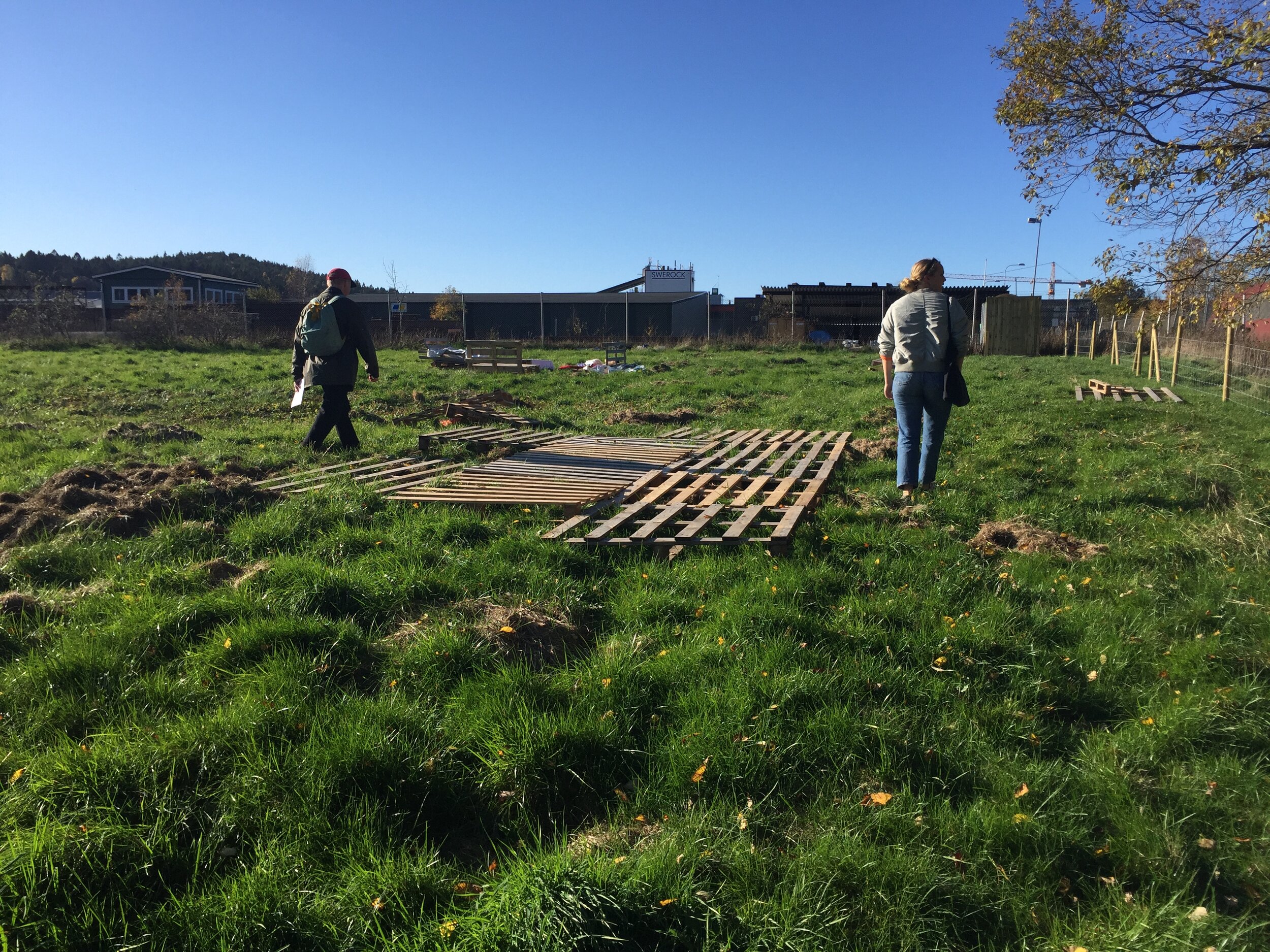Growing Together.
How to activate a space and a community? How to enable a civil organisation to drive and own their development process of urban eco-agroforestry?
Developing an outdoor workshop approach to iteratively materialise the vision of the organisation on site.

Collaborators
In the present project, we worked closely with:
Design researcher focusing on participatory design
Civil organisation wishing to establish eco-agroforestry
Local youth organisation
Architecture students working with social inclusion
How to make a network work?
The core of the collaborative network was a small civil organisation with a big piece of land - a big vision and small visible results within an ever-growing network. Our guiding question to navigate through the process was “How to grow together?” and “How to make a network work?”.
A Network. Loose at Some Spots. Tight at Others.
Workshop with Youth Organisation
Growing Together - Process as Delivery?
We developed an outdoor workshop approach to iteratively materialise the vision of the organisation on site. Tangible results fostered more concrete conversations. We seeked to establish “Continuous Action and Slow Growth” to make the efforts manageable and strive towards self-organisation and internal strength to “grow together” and “make the network work”.
When working with a human-centered approach, process and delivery are often hard to be distinguished. Nonetheless, we created a final presentation for the organisation to be shown to authorities in order to attract new funding. We further provided the organisation with a presentation template they could easily adjust to future needs and requirements.






The civil organisation and its mission could be introduced as a project to courses taught at HDK-Valand in order to support a sustainable and steady development. In 2020, the organisation and its closer collaborative network received another round of funding to drive eco-agroforestry and collaborative design research in Sweden.
Lessons Learned: Not only visualisation but also large scale materialisation is valuable when working in complex collaborative environments.
Next Steps: Continuous action and slow growth.
Collaborators: Livia Walker and our main project partners Helena Hansson, researcher and lecturer at the Academy of Art and Design HDK-Valand, and Sarah Mubiru, chair woman of the civil organisation EAC
Pictures: Omer Mohammad, Jessica Litzel
